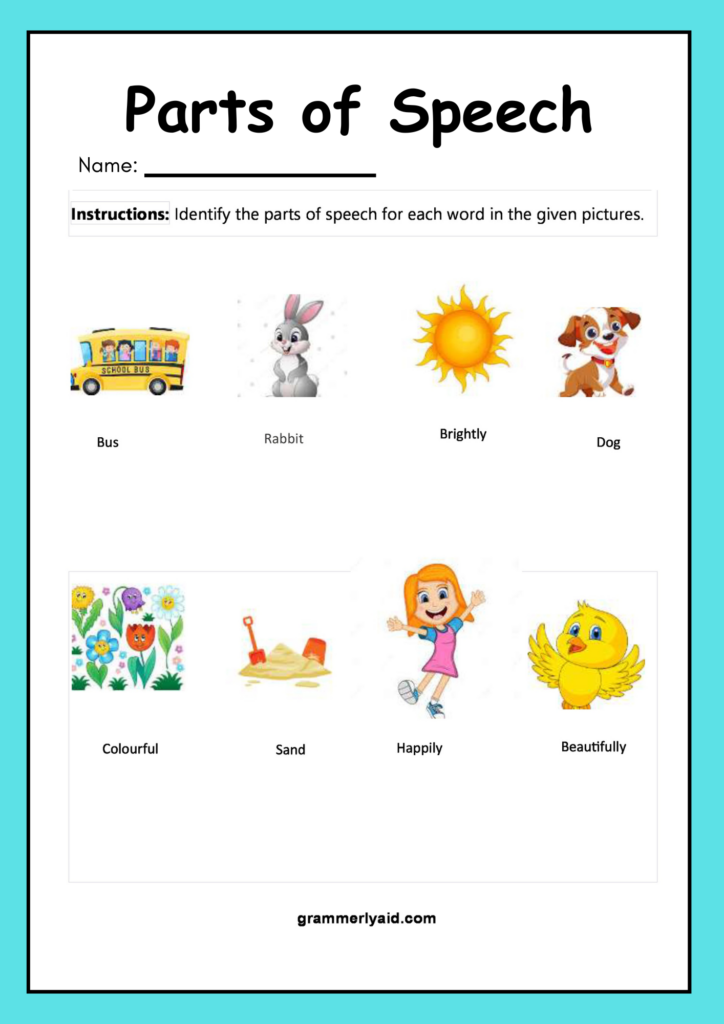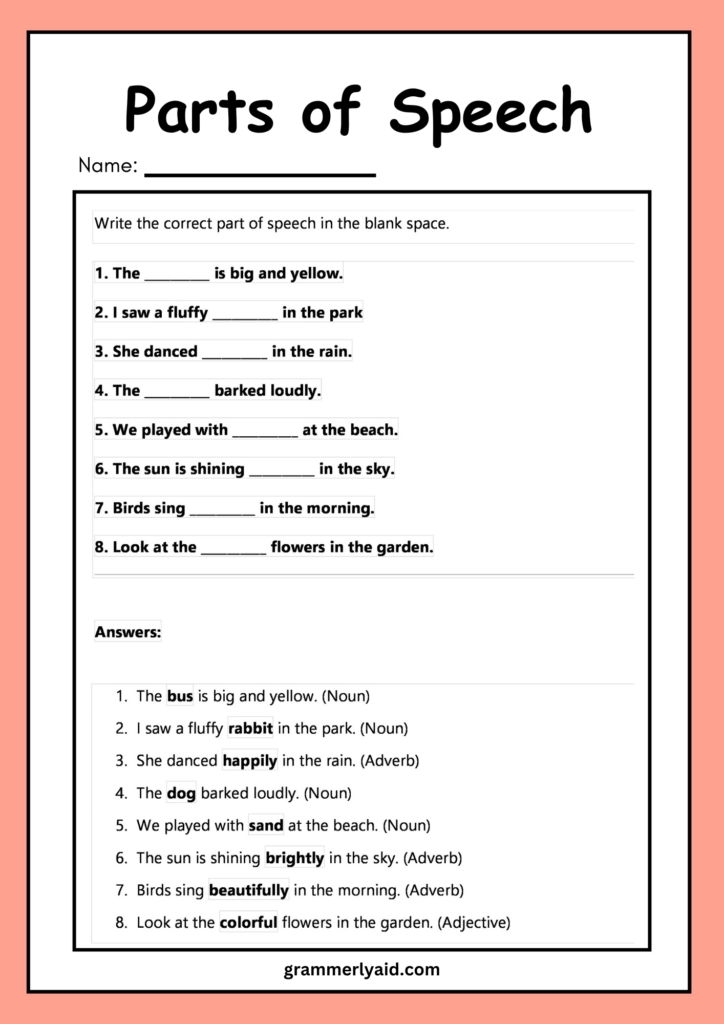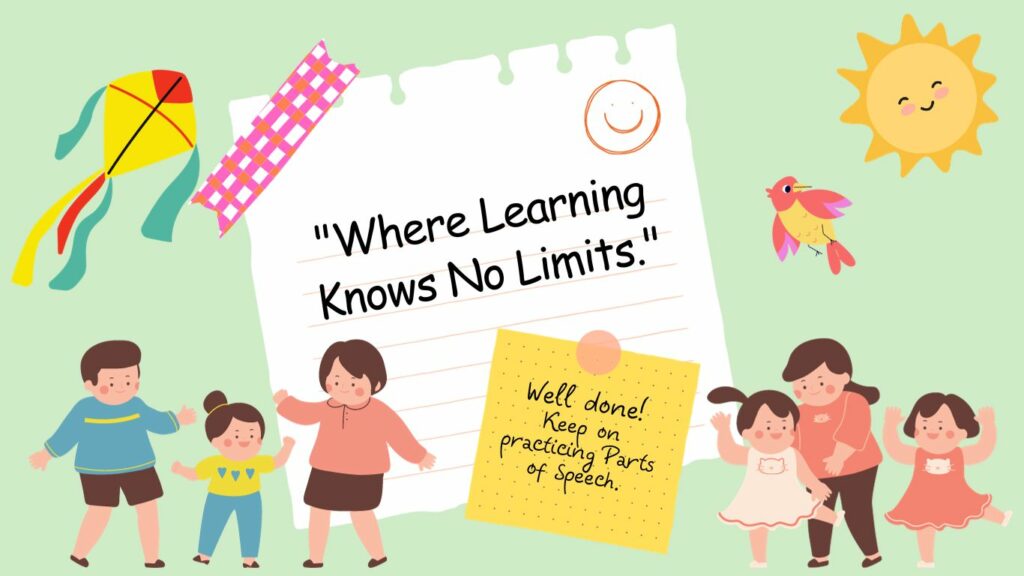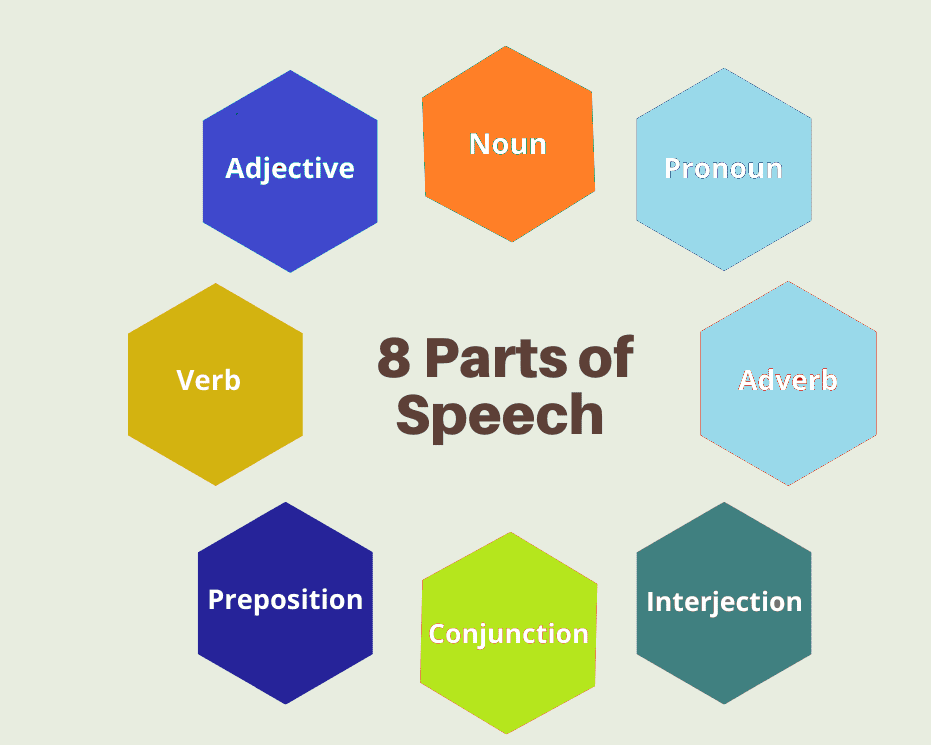Parts of speech are categories that define the grammatical functions of words within a sentence. They help convey the role each word plays in the structure of a sentence. Understanding it is fundamental to constructing grammatically correct sentences and communicating effectively in English. Each part of speech serves a specific role in conveying meaning and structure within the language.
Table of Contents
show
There are eight traditional parts of speech:
- Noun:
- Definition: A noun is a word that represents a person, place, thing, or idea.
- Example: “cat,” “London,” “friendship.”
- Pronoun:
- Definition: A pronoun is a word that takes the place of a noun in a sentence.
- Example: “he,” “she,” “it,” “they.”
- Verb:
- Definition: A verb is a word that expresses action or a state of being.
- Example: “run,” “eat,” “is,” “am.”
- Adjective:
- Definition: An adjective is a word that describes or modifies a noun or pronoun.
- Example: “happy,” “blue,” “tall.”
- Adverb:
- Definition: An adverb is a word that modifies a verb, adjective, or other adverb, providing additional information about the manner, place, time, or degree.
- Example: “quickly,” “very,” “here.”
- Preposition:
- Definition: A preposition is a word that shows the relationship between a noun (or pronoun) and other elements in the sentence.
- Example: “on,” “under,” “in.”
- Conjunction:
- Definition: A conjunction is a word that connects words, phrases, or clauses.
- Example: “and,” “but,” “or.”
- Interjection:
- Definition: An interjection is a word or phrase used to express strong emotion or surprise.
- Example: “Oh!” “Wow!” “Alas!”
Worksheet for practice:



Easy methods of learning parts of speech:
- Colour-Coding:
- Use different colours to highlight or underline each part of speech in sentences or texts. This visual aid helps reinforce the association between colours and parts of speech.
- Interactive Games:
- Play games that involve identifying parts of speech. Board games, card games, or online games can make learning more enjoyable and interactive.
- Storytelling:
- Create stories or sentences that include examples of each part of speech. This method allows for a contextual understanding of how each part functions.
- Songs and Rhymes:
- Set parts of speech to catchy tunes or rhymes. Singing or reciting rhymes can make the information more memorable.
- Flashcards:
- Create flashcards with a part of speech on one side and examples or definitions on the other. Quiz yourself regularly to reinforce learning.
- Use Real-Life Examples:
- Identify parts of speech in everyday conversations, books, or articles. Real-life examples help connect theoretical knowledge to practical usage.
- Grouping Activities:
- Group words based on their parts of speech. Create visual charts or posters that categorize words into nouns, verbs, adjectives, etc.
- Drawing or Picturing Words:
- Illustrate words or sentences to represent different parts of speech. Drawing visual representations can aid in memorization.
- Role Play:
- Act out sentences or scenarios that involve different parts of speech. This kinesthetic approach can help reinforce understanding.
- Technology-Based Learning:
- Explore online resources, apps, or interactive websites that gamify parts of speech learning. Many platforms offer engaging exercises and quizzes.
- Create a Parts of Speech Handbook:
- Develop a personal handbook or reference guide with examples and explanations for each part of the speech. Organize it in a way that is easy to navigate and review.
- Teach Others:
- Teach the concept of parts of speech to someone else. Teaching others reinforces your understanding and helps you remember the information better.
- Connect with Hobbies:
- Relate parts of speech to hobbies or interests. For example, identify parts of speech in sports commentary, lyrics of favourite songs, or descriptions of hobbies.
- Mnemonic Devices:
- Create mnemonic devices or memory aids for each part of speech. For example, “Noun is a name.” Think of “Verbs are action words” or “Adjectives” as words that add “descriptions” to nouns.


